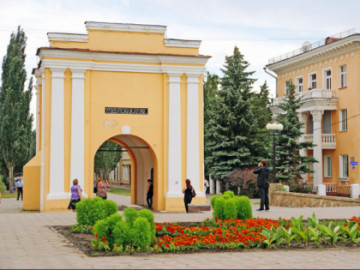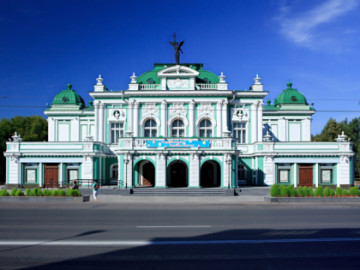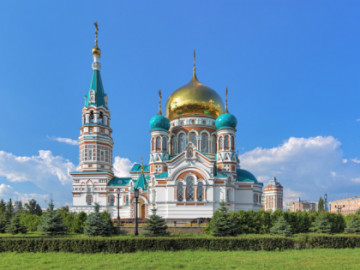Omsk Fortress: Two Redoubts for the Future City
The historical and cultural complex of Omsk Fortress is a reminder of how Omsk city appeared on the map of Russia. In 1716, a detachment of Lieutenant Colonel Ivan Dmitrievich Bucholz built two small redoubts on the banks of the Om river. This place, marked with a memorable sign "Derzhava" (great power) in modern Omsk, turned out strategically advantageous. Soon a fortress was built there. According to the census in 1725, 992 people (only men were counted) lived there.
By the middle of the XVIII century, the defensive capabilities of the old Omsk Fortress evidently weakened. Therefore, Lieutenant-General Ivan Springer decided to erect a new defensive structure on the other side of the Om river. The construction of the second Omsk Fortress was completed by the end of the 1760-ies and was five times larger than the previous one. Mainly convicts and Cossacks built it. The general's house, the house for officers, barracks for soldiers, warehouses and other buildings for military and administrative purposes were on the territory of the fortress. The Resurrection Cathedral was the first stone building, the construction of which began in 1769. In 1864 Omsk Fortress was abolished. The revival of the historical monument was undertaken at the end of the 1990-ies. Now the historical and cultural complex of Omsk Fortress, built in 2009, includes Tobolsk, Omsk, Tara and Irtysh Gates and the monetary pantry. There are plans for the reconstruction of other buildings. The complex territory hosts folk festivals and craft fairs. For acquaintance with Omsk city and Omsk Fortress, tourists are offered ten excursion programmes. One of the most interesting excursions called "Retracing Dostoevsky’s Steps" tells about the period of the great writer’s stay in Omsk.







































